IndiaWilds Newsletter Vol. 8 Issue VI
Killing Fields: India’s War against Wildlife
When the prehistoric cave man was on its path of evolution, it survived fighting many a battle with wild animals, big and small, for its survival. Aptly termed as the survival of the fittest, man learned use of tools to overpower wild animals who have superior body strength, agility, power and nature given weapons of attack and defence like claws, fangs and canines. A couple of million years later, man evolved into the modern man of today and invented weapons to shoot from a distance and kill wildlife. Later he learnt to build fire weapons and started controlling and exterminating wild life. With such weapons at his disposal man lost the fear of being hunted and soon hunting to kill wildlife turned into a pleasurable avocation.
The human race multiplied its numbers to the present population of more than 7 billion, appropriating all the land and resources for itself and killing and wiping out many species from the face of earth. India too has contributed in this journey significantly with 1.3 billion human population of its own. All these years the wildlife has been on a retreat relinquishing its territory to the continuous onslaught of humans.
The forests have been converted into agricultural fields, drowned by creation of large dams, dug up to mine minerals, cut off to extract timber and firewood, torn apart by canals and river linking and cleared off for industrial projects. So the linkage between the forests have been lost. The forests are now more like islands surrounded by concrete jungle created by human beings. Fortunately, a few statesmen had been wise enough to create protected areas, which have become the last refuge of our wildlife. Else even these areas would have been lost by now.
Having created these protected areas, people expect that all the animals and other wildlife should be restricted to those areas. For the wildlife stepping out of the man made protected areas is akin to moving to another country without passport. They are captured and banished for life imprisonment or felled by bullets.
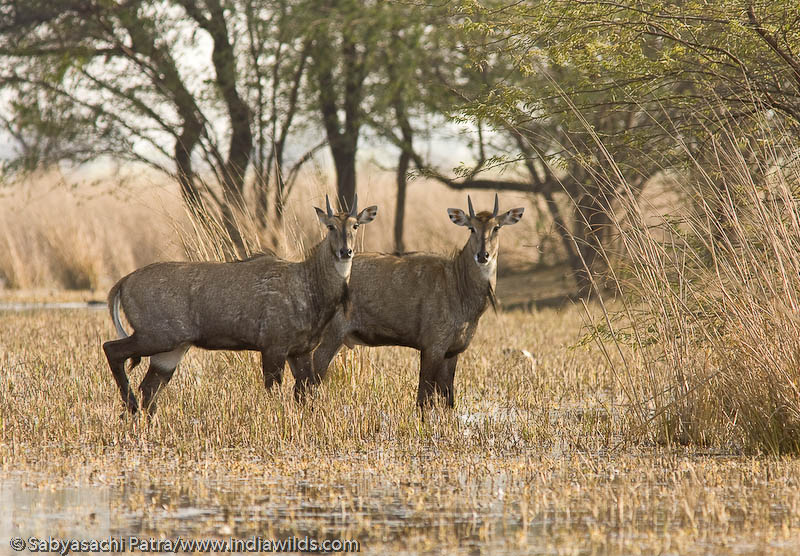
A pair of Nilgai or blue bulls (Boselaphus tragocamelus), India’s largest antelope, alert and ready to run away
Our wildlife is supposed to be protected by law. Unfortunately the Ministry of Environment and Forests is too eager to give out permissions to kill wild animals. The massive scale of recent killings unleashed by the permissions granted by MoEF&CC has resulted in hundreds of nilgai’s, wild boars, macaques and even peacocks being killed in various states. The sight of trigger-happy shooters moving in jeeps and firing indiscriminately gives a distinct feeling that India is at war against its wildlife. The visuals beamed across by various news channels was so repulsive that the Union Minister for Women and Child Welfare Mrs. Maneka Gandhi had to hit out against Mr. Prakash Javadekar, Minister for MoEF&CC. Mrs. Maneka Gandhi said “In Bengal they gave permission to kill elephants, in Himachal they gave permission to kill monkeys, in Goa they gave permission to kill peacocks. I don’t understand this lust for killing. The environment ministry is here writing to every state asking them which animal they want to kill and they will grant permission”.
Press Release by Inspector General Wildlife
This unprecedented controversy and a sitting Cabinet minister hitting against a minister of her own Government forced the MoEF&CC to issue a press release through Inspector General Wildlife, Ministry of Environment, Forest and Climate Change, Dr. S. K Khanduri. The press release reads as follows:
“India is proud of its animal-human coexistence. In some places, animal- human conflicts happen. Last year, more than 500 people lost their lives in human-wildlife conflicts. There are standard operating processes laid down in the Wildlife (Protection) Act 1972. Therefore, the Ministry has not given any permission to kill either Deer, Peacock or Elephant.
There are many complaints from Members of Parliament, People’s Representatives, State Governments and Farmers about their crops getting heavily damaged in certain parts of the country. There also, the process has been laid down in the Wildlife (Protection) Act 1972 under section 62. No amendment has been made by the Government to this Act. And nothing has been done beyond the procedure prescribed by law.
As per the provision of law, if there are complaints about the wildlife conflict, then State Government has to submit the proposal. Till date, five states have submitted the proposal. The Ministry examines the proposal in detail and allows scientific management in a specific area for a limited time. There were complaints about wild boar, Blue bull and other animals.
Accordingly, these proposals have been examined and given permission for scientific management for a limited time for a specific area in the three states of Uttarakhand, Bihar and Himachal Pradesh. Proposals of Maharashtra and Gujarat are still being examined.”
This unprecedented killings resulted in petitions in the Supreme Court. The Supreme Court bench led by Justice Adarsh K Goel has said that the Supreme Court will hear next month the petitions filed against the validity of Central Governments notifications for murdering wildlife. The bench also mentioned that animals can’t be killed in their home. The Solicitor General Ranjit Kumar informed the Hon’ble Supreme court that wildlife killing is done when the animals venture out of the forest and enter human habitations.
Unfortunately, the contention by the Solicitor General that the killing of wildlife outside protected areas is legal is absolutely wrong. Wildlife not only stay inside the few protected areas that have been created but also thrive outside the protected areas. While denoting certain areas as wildlife sanctuaries, national parks and reserve forests, many other areas have been left out. Some of these areas are not notified as forests but have adequate vegetation for animals, birds, reptiles and other wild species to survive. Many species like leopards, jackals, wolves, hyenas, jungle cats, fishing cats, civets, peacocks, pythons, mongoose etc live in these areas.
With increased human population and real estate boom, large tracts of land is converted to residential purposes. Many urban dwellers these days prefer to own farm house as a status symbol. There is also an influx of refugees in many places who clear the vegetation to set up their dwellings. Most of these people had no prior experience of wildlife and hence are afraid of them. Whenever such sightings occur, the first response is to capture and hunt the animal. These incidents are reported as wildlife entering human habitations. Human mind has an uncanny ability to find probable answers for any question, how-so-ever improbable the answer may be. So people often mistakenly believe that these sightings of wildlife near these human habitations is due to increase in wildlife numbers as a result of which various wildlife species move out of the forest areas.
Myth of Increasing Wildlife numbers:
It is a myth that wildlife numbers have increased. Unfortunately there are a few scientists who continue to perpetrate those myths. Dr. Raman Sukumar, member of National Board of Wildlife have in the past said that elephants near human habitations should be captured. Recently he said “We have observed a sharp increase in the number of elephants — from 15,000 in 1982 to 30,000 in 2016. Even the population of tigers, rhinoceros and lions is on the rise. However, considering severe climate change, the government needs a landscaping approach for wildlife rather than a protected area approach”.
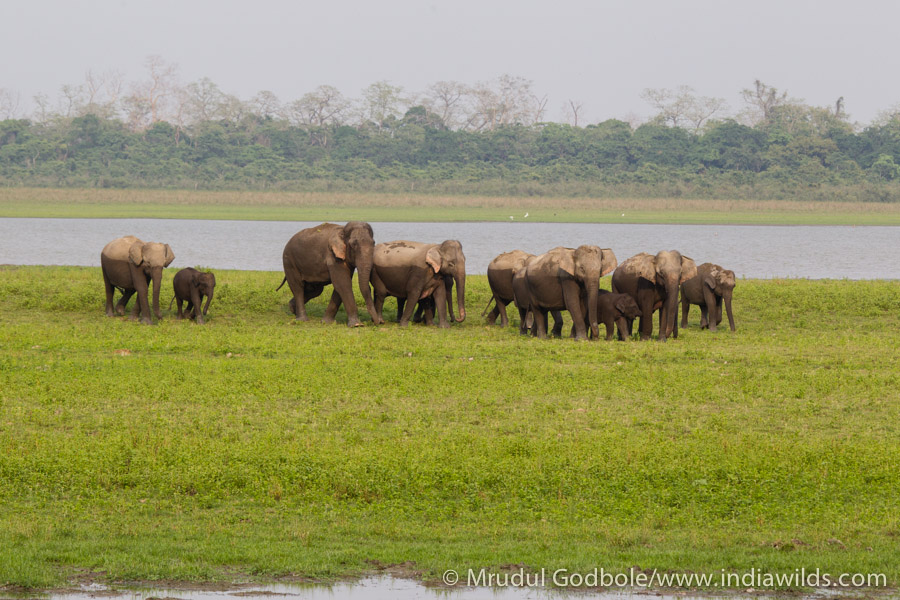
Elephant herd crossing a river in Assam. These traditional migratory corridors are under threat. Locals suggest the herd sizes have reduced
Dr. Priya Davidar dismantles this claim in her recent article by writing “Nobody really knew what the Asian elephant population in India was in 1982. As late as 2004, leading elephant researchers Stephen Blake and Simon Hedges were saying “It is not possible to estimate the total elephant population of India or to compare population numbers among sites. Totals cited for India should therefore be regarded as educated guesses.” Dr. Davidar further writes “In 2003, Dr. Sukumar made a “guesstimate” that there were 28,580 elephants in India. However, if the population had indeed doubled from 15,000 elephants in 1982 to 30,000 elephants in 2016, then the population should have been around 23,000 elephants in 2003.
Whether the 2003 “guesstimate” was an overestimation, or whether the suggested population growth rate of around 2 percent per year is an overestimation, we play with huge uncertainties that make sweeping statements dangerous.
In a model used by Dr. Sukumar in the 1980s and later, it was assumed that elephant populations had reached their maximum numbers in different Indian reserves — the reserves were effectively saturated with elephants and could sustain no more individuals. But if this were so, then the only way the Indian elephant population could have doubled is if their available habitat had doubled”. (http://alert-conservation.org/issues-research-highlights/2016/6/13/1qjx5muigu4ne589lsfyq6fnunw7yw ) Since the existing protected areas are being sacrificed for various projects like mines, dams, canals, river linking, power projects etc, the habitat for elephants and other wildlife is shrinking. So obviously, the statement about the rise in elephant population should be taken with a pinch of salt.
The perception of increase in wildlife numbers is because the human-wildlife interface has increased due to more roads constructed through the wildlife habitat and increased number of vehicles plying in these roads. “Even the once obscure forest roads now have many visitors and the forest boundaries have been filled up with tourist resorts, industries and housing colonies. Wildlife habitats continue to suffer from shrinkage and fragmentation. These days an elephant or any wildlife for that matter may have to encounter human beings several times a day during its daily movement within its range. A decade ago elephant herds might have peacefully crossed the Mettupalayam to Ooty road in the cover of the darkness. This is just not possible today with over 3000 vehicles on an average plying in this road day and night. Elephant herds stay baffled in the road side awaiting a lull in the traffic to cross the road. They stand exposed being watched by hundreds of people most of who think that the elephant numbers have increased just because they saw them! Mere increase in the sighting rate within or outside the habitat does not mean that there is a true increase in the wildlife population”. (N. Lakshminarayanan, 2012, http://www.indiawilds.com/diary/wildlife-on-the-rise/ )
Culling or killing in the name of Scientific Management:
Human population has increased to 7 billion whereas the earth can only accommodate 5 billion population. Even this 7 billion plus human population on earth is projected to increase to 9 billion. When we human beings are not able to control our own population, thinking of controlling population of other wildlife species is laughable.
“Billy” Arjan Singh’s stinging rebuke to the proponents of Culling or killing wildlife in the name of scientific management from his book “The Legend of the Maneater”:
“A wildlife management ploy, which is of immense harm to wildlife, is culling. Managers maintain this is essential in certain cases to maintain the biomass population in relation to the habitat available, and in preventing population pressures from degrading the habitat. In other words, the human has arrogated to himself the task of adjusting the wildlife population to the forage available in a given area. In these days of habitat reclamation for human use, this places an unwarranted onus on the human species, which, as we have already seen, is singularly unqualified to deal with population control”.
“Wild animals are eminently adaptable, and if certain ungulates overgraze the forage they have been used to, they will opt for other forms of life maintenance. Browsers may become grazers, and other sources may be discovered. The hardground swampdeer of Madhya Pradesh are genetically the same as the marsh inhabitants of Kaziranga. The sambhar, supposed to be solitary inhabitants of dense forest, now gregariously feed on water plants in Ranthambore, like the barasingha. Wild elephants propagate trees from the seed pods they ingest. When they cannot strip bark from trees, they switch to a diet of grass. Yet in Africa it is maintained that they have destroyed and are destroying their habitat, and should be culled for their own good. This reprehensible idea is implemented by the slaughter of entire herds of Zimbabwe, and is a crime against laws of the universe as ordained by nature. These insensate massacres are a greater offence than that of a country like Japan, which may illegally smuggle ivory, but those artisans have never seen an elephant”. (http://www.indiawilds.com/diary/indiawilds-newsletter-vol-2-issue-i/ )
Recent research suggests that culling has a huge negative impact on the wildlife. The errant behavior of adolescent elephants in killing rhinos, tearing down huge trees etc in Africa was found to be due to the trauma they suffered when adult elephants from their herd were shot dead. In the US it has been reported that when adult cougars were killed, their place is taken by young cougars. Whereas the adults had lived in close proximity of humans and have rarely been observed, the young ones have been attacking humans. Perhaps, the young ones need a calming influence and guidance of the adults in their growth stage as we certainly do.
There are many people who still harbour atavistic fears of wildlife. To these people any and every possible reason to kill wildlife is welcome.
Lack of Scientific Studies:
Not many of our wildlife reserves have got qualified scientists who can take a holistic view and recommend actions that are in sync with long-term management of wilderness areas in an ecologically viable manner.
Our forests have lost a lot of bio-diversity. In most of the areas exotic weed infestations have resulted in lack of food for herbivore species. Coupled with the fact that human habitations around the forest areas continue to cultivate crops that are preferred by the wild herbivores. There are forests where tourists often complain that they can’t even sight a spotted deer. However, the farmers in the outskirts of the forests complain of crop depredations by herds of spotted deers, nilgais and sounders of wild boars etc. (http://www.indiawilds.com/diary/indiawilds-newsletter-vol-7-issue-vii/ )
In many of these forests the carnivores have been locally exterminated. Carnivores limit the number of their prey and help alter the structure and function of the ecosystem (Schaller 1972). Our Government’s, both local and central, don’t think in terms of long-term solutions. They want to immediately bow down to local pressures and allow shooting of wild herbivores. No scientific studies have been conducted to ascertain the reasons of the local man-wildlife conflict. This gives an impression that the MoEF&CC instead of making all attempts at preserving our natural heritage is actually in a mission to exterminate India’s wildlife and wilderness areas.
India’s wildlife is intricately linked with our culture. When we decimate our wildlife and wilderness areas, we strike at the core of our values, beliefs and our cultural ethos. On the occasion of World Environment Day in 2014, our Prime Minister Mr. Narendra Modi had said “We are blessed to be a part of a culture where living in complete harmony with the environment is central to our ethos. Let us serve as trustees, where we utilise our natural resources for the present and at the same time ensure happiness of our future generations. Let us ensure that even the smallest step we take in our daily lives will be an effort towards conserving nature and natural resources”. (http://www.indiawilds.com/diary/indiawilds-newsletter-vol-6-issue-vi/ )
It is strange that when the members of the ruling party are talking non-stop about our ancient civilisation and frown upon anything foreign, MoEF&CC is presiding over mass murders of our wildlife without taking into account our cultural, ethical and scientific reasons for not killing wildlife. The Hon’ble Minister for MoEF&CC may just need to be reminded what his own Prime Minister had stated two years ago. It is time that our Government realises its fallacy and engages in preserving our wilderness areas and wildlife on ecologically sound principles.
This Killing of Wildlife has to stop.
Is Spatial Occupancy related to seasonal change in the life of the Gangetic dolphin Platanista gangetica gangetica?
By Shah Nawaz Jelil
Is spatial occupancy related to seasonal change in the life of the Gangetic dolphin Platanista gangetica gangetica?
Gangetic dolphins Platanista gangetica gangetica are mobile freshwater predators. It is the national aquatic animal of India and the state aquatic animal of Assam. In spite of being a ‘flagship’ species, representing an ecosystem in need of conservation, its status has become a matter of grave concern over the past few decades (Behera, 2002). Dolphin is to a river, as tiger is to a forest (Jelil, 2016). The condition of the Gangetic dolphin is probably worse than that of the tiger as less attention has been paid to its conservation and management (Bashir et al. 2010 b).
River Kulsi, a southern tributary of the Brahmaputra, is considered as one of the last refuges of the Gangetic dolphins in Assam (Jelil, 2016). While conducting regular surveys in Kulsi, a spatial occupancy trend among Gangetic dolphins was observed. It is known that animals have habitat preferences; these preferred sites provide resources and conditions that are important drivers of fitness, and by extension distributions and population dynamics. Habitat has a temporal component and is scale dependent for e.g. a forest may be habitat for a squirrel but at a finer scale certain trees may not. To understand this aspect in river dolphins, the relationship between spatial occupancy trend and seasonal change was investigated. This is a part of a larger study which was carried out in Kulsi from 2013 to 2015 to understand the status of dolphins in Kulsi.
Geographically Kulsi originates in the state of Meghalaya (25°38ʹ N, 91°38ʹ E) in Assam. It provides an ideal habitat for the Gangetic dolphin with ample tributaries and is surrounded by a number of wetlands which play a pivotal role in providing a healthy prey base for the dolphin. After reconnaissance survey, we concentrated on five sample sites namely Satpakeli, Kukurmara, Gumi, Samaria and Nagarbera to observe the spatial occurrence trends. Land based surveys were conducted following Aragones et al. (1997) in two seasons, pre-monsoon and monsoon. In the pre-monsoon season, dolphins were observed in only one (Kukurmara) out of the five sampled sites while in the monsoon, dolphins were recorded in four (Satpakheli, Kukurmara, Samaria, Nagarbera) of the five sampled sites. Study reveals that there is a correlation between seasonal change and spatial occupancy of dolphins in Kulsi. The inference is that during pre-monsoon season, since the river depth and width decreases, the dolphins seek refuge in segments of the river Kulsi which are comparatively deeper.
Presence of dolphins indicates the health of a river. It is now understood that some particular stretches of river Kulsi are significant for dolphin conservation. Further investigation into this trend might provide invaluable insights into the habitat ecology of river dolphins. Studies have speculated that various factors influence the Gangetic dolphin habitat use, including water depth, channel width, direction and velocity of flow, water quality, confluence areas, geomorphic complexities, substrate type, sediment load, hydraulic refuges, eddies and mid-channel island habitats (Kelkar, 2008). Along with these, prey availability is another important factor that can affect dolphin population size and drive its habitat selection (Bashir et al. 2010 b). Similar studies carried out in Kulsi will provide quintessential information to come up with strategies to manage the surviving population of the Gangetic dolphin and its habitat.
References:
Bashir, T., A. Khan, S. K. Behera & P. Gautam (2010 b). Abundance and prey availability assessment of Ganges river dolphin (Platanista gangetica gangetica) in a strect of upper Ganges river, India. Aquatic Mammals 36: 19–26.
Behera, S. K. (2002). Ganges River dolphin—Wanted alive! (Status report submitted to WWF-Sweden). New Delhi. Ganges River dolphin Conservation Project, World Wide Fund for Nature-India.
Jelil, S. N. (2016). Rich biodiversity of River Kulsi. Current Science 110(10):1882.
Aragones, L. V., T. A. Jefferson, & H. Marsh (1997). Marine mammal survey techniques applicable in developing countries. Asian Marine Biology 14: 15–39.
Author details:
Name: Shah Nawaz Jelil
Affiliation: Division of Wildlife Management and Biodiversity Conservation, ENVIRON, 60, LNB Road, Hatigaon, Guwahati-781006, Assam, India
Email: shahnawazjelil@gmail.com
Conservation News
Gharials breeding in Gandak river in Bihar
Amidst all the bad news emanating from our wilderness areas, one news by PTI has brought out smile in the faces of conservationists. Gandak river in Bihar has now seen successful breeding of wild gharials. The Bihar forest departments Gharial Conservation Programme with WTI had released captive-bred gharials (Gavialis gangeticus) into the Gandak river. Monitoring revealed six nests on the river bank along a 700meter stretch. Continuous monitoring along with local villagers revealed that about 7-8 hatchlings hatched from the eggs.
“This is the first record of wild bred gharials in the river. Decades ago there used to be a good number of gharials but gradually the number depleted. Now breeding has once again begun,” Samir Kumar Sinha, head of the Gharial conservation project told PTI from Patna.
A 2010 study had estimated 15 gharials in the Gandak river before the conservation project started. Now it is estimated a minimum of 54 gharials are present with 26 adults among them.
These fish eating gharials were once present in large numbers in many of our rivers. Poaching for skin, killing by local villagers due to ignorance, pollution, loss of habitat etc resulted in the local extermination of these gharials. Hopefully soon they will spread and occupy more areas.
Lioness dies in Gujarat after being trapped in barbed wire
The lions of Gujarat have moved far and wide to carve a space for themselves. Many of these lions face an uncertain future when they move out of the protected areas. They are either killed in accidents in train lines, road accidents or even get electrocuted and killed in barbed wire fencing.
Recently a lioness was killed in Junagadh district of Gujarat when it got trapped in a barbed wire fencing of a farm house.
The lioness was reported to have died in Vokala village in Dungar (north) range of Junagadh forest area on 9th June. According to the Chief Conservator of Forest Junagadh Mr. S. K. Mehta the lioness badly hurt her abdomen and died. The forest officials were informed by a nearby farm owner.
The farm owners in the area set up barbed wire fencing to avoid Nilgais (blue bull), wild boar and other herbivores to protect their crops. They illegally connect electricity to the wire fencing and when the animals touch the wire, they violently shake and die. During the struggle their abdomen and other body parts get lacerated by the wire fencing.
Despite warnings nothing has been done in the past to stop the illegal electrocution of wildlife and farm owners continue to connect live wires to the wire fencing.
Narendra Modi’s Cabinet approves MoU between USA and India to enhance cooperation in wildlife conservation
India will sign a MoU with the USA for increasing the cooperation between the two countries for Wildlife Conservation and checking wildlife trafficking. India is likely to benefit a lot from the expertise of various American institutions for Wildlife conservation, management of wilderness areas and to fight illegal trade in wildlife.
Every year a lot of charismatic species get poached from our forests. According to WPSI statistics 30 tiger deaths in 2016 is due to poaching. According to conventional logic, for every one seizure another nine go unnoticed. So from that logic about 300 tiger deaths could have taken place in 2016 due to poaching. It is more than 10% of our claimed wild tiger population. The cooperation in wildlife forensics will help a lot in the collecting evidence to nail wildlife crimes. The species conservation efforts will also likely get a boost from the cooperation in conservation genetics. The actual details of cooperation is yet to be known.
The cooperation will also help in institutional capacity building of the UNESCO Category -2 – centre at WII (Wildlife Institute of India).
The use of IT in strengthening the interface of protected area managers with the local people for sensitizing them about Nature Interpretation and Conservation Awareness: Use of information technology in strengthening interface of forest managers with the people will help in sensitising people, especially the youth and children, in making them understand the intricate relationships between various species and complex issues related to the conservation of the incredible bio- diversity of this country.
239 Projects cleared by NDA Govt. in Two Years
India’s Environment Ministry has selectively shared some data about the environment approvals given till date by the Modi Government at the Centre. On June 7th the Government said that a total of 239 projects have been granted environment approval by the Modi Government. It said that cumulatively these projects are worth over 5 lakh crores of rupees with an employment generation potential of 1.64 lakh jobs. However, the Government remained silent on the total number of forest areas diverted for these projects.
The Modi Government had come to power promising industrial development. The unprecedented campaign for the 2014 Parliamentary elections was estimated to have cost a minimum of 10,000 crores of rupees. Some estimates suggest atleast double that amount was spent. So the focus of the Government from day 1 of assuming power was to clear projects. So the Government releasing data about project cost and employment potential is like a sales pitch and talks volumes about its lack of focus in saving India’s environment and wildlife.
The detailed state-wise data of public utility projects given environment clearance between May 2014- April 2016 released by the MoEF&CC reveals that Rs.503,750 crore worth of projects were cleared across all states which together have a said potential of creating 164,239 jobs.
Among the states, Maharashtra had a maximum of 35 projects cleared which is worth Rs.135,634 crore and having a potential of 11,030 jobs.
Know Your Plants
Curry Leaf : A Gem Of Indian Cooking by Dr. Rashmi Rekha Patra
http://www.indiawilds.com/diary/curry-leaf-a-gem-of-indian-cooking/
IndiaWilds App for Android Mobile
In India most of the internet penetration is happening through mobile phones. And the existing users who have access to desktops and laptops are becoming much more mobile then they used to be a few years ago. So to raise awareness and reach out to more people we need to adapt ourselves and make IndiaWilds easily accessed through a mobile phone using android OS.
We have created a mobile phone app so that people can access IndiaWilds anytime, anywhere without being tied to a computer. No need to type. One can access at the click of a button.
We have developed this app through Business Compass LLC a company based in Randolph, New Jersey, United States so that we create a good app.
Awareness is the first step before a person can become a champion of wildlife. I hope this will help us in reaching out to more people to raise awareness and make a real impact on the conservation landscape. If you have an android device then please download the app from this link:
https://play.google.com/store/apps/details?id=com.businesscompassllc.indiawilds
Equipment Discussions
Hasselblad launches X1D-50C – Worlds first mirrorless digital Medium Format Camera
Hasselblad has announced the X1D-50C which is worlds first mirrorless digital medium format camera. The X1D-50C has got 50 Megapixels. The CMOS sensor is 43.9×32.9mm which is present in medium format cameras.

Hasselblad launches X1D-50C
The mirrorless camera makes it very compact for travel. This is not for the regular wildlife with tele-lens crowd but would be good for landscape, travel, architecture, product, promotions etc. Following are the salient features of the Hasselblad X1D-50C mirrorless camera:
Senor: CMOS 50 Megapixels
Sensor size: 43.9×32.9mm
Colour depth: 16 bit
Dynamic range: 14 stops
ISO: 100-25600
Photo burst rate: 2.3fps
Shutter speeds: 60 minutes to 1/2000 second. So if you are shooting in a cave with very low light, you can place this camera on tripod and keep the shutter open for upto 60 minutes. There is no vibrations at long exposures.
Flash sync: one of the strong points of this camera is the flash sync at all shutter speeds upto 1/2000 seconds. For the record no DSLR can do this.
Shutter Life: The shutter life of Hasselblad X1D-50C is rated to beyond 1,000,000 exposures.
HD Video: 1080p at 25fps
Viewfinder: 2.36MP XGA electronic viewfinder
LCD: 3.0″ 920k-dot touchscreen LCD
Media: dual SD card slots, GPS and WiFi
Connectors: USB 3.0 Type-C connector, Mini HDMI, Audio In/Out
Weather and Dust sealing is present to allow the photographer to use this camera in any conditions.
Bundled software: Phocus 3.1, a free image processing software is bundled with the camera which complements the X1D’s capabilities. With Phocus 3.1 software one can process the raw files, and conduct a range of editing tasks including automatic moiré detection, adjustment layers for applying exposure, white balance, and color corrections etc.
Lenses for X1D-50C: New line of XCD lenses with integral central shutter; 45mm and 90mm available at launch
Price: The X1D is priced at 7,900 EUR / 8,995 USD / 5,990 GBP. All prices stated are exclusive of VAT.
Weight: 725g
Availability: 29th July as per B&H
Press Release:
Hasselblad announces groundbreaking X1D
The world’s first compact mirrorless digital medium format camera
Hasselblad is proud to introduce the groundbreaking X1D – weighing less than half that of a conventional digital medium format camera, the mirrorless 50MP camera is a game changer in the world of photography.
Inspired by the brand’s iconic design heritage, the camera is ergonomic and compact, offering a handling experience unlike any other. Handmade in Sweden, the X1D combines Scandinavian sensibility with beautiful performance.
Like the iconic V System, the X1D seamlessly combines portability with excellent optical quality for which the brand is renowned. Hasselblad has ingeniously introduced mirrorless technology to digital medium format for the first time ever, creating a precision performance camera that can sit in the palm of your hand. The 50MP CMOS sensor captures the finest details with true natural colours.
Commenting on the announcement Perry Oosting, Hasselblad CEO noted: “The X1D marks a pivotal point in Hasselblad’s rich 75-year history. This camera makes medium format photography available to a new generation of Hasselblad users, while pushing the existing limits of photography to new heights.”
A completely new family of dedicated autofocus lenses has been developed to support optical quality and portability, offering a wide range of shutter speeds and full flash synchronisation up to 1/2000th second.
Weighing just 725g and including HD video, Wi-Fi and built-in GPS, the X1D is a trusted partner and ideal travel companion. The robust exterior is dust and weather proof, providing durability to take with you wherever you go.
The X1D has been created with passionate photographers in mind, opening up Hasselblad to a new generation of creatives. Ideal for those who want to create the highest quality medium format images with a straightforward and easy to use camera that can fit in the palm of your hand.
How to Shoot Great Photographs
My Shots are good but not great. What do I need to do?
In the past I had written an article on “How to shoot a good photo” http://www.indiawilds.com/diary/how-to-shoot-a-good-photo/ detailing the various tips and tricks. By now most of you seem to have mastered those rules and want something more. The following tips may seem easy but is actually difficult to master as it may require you to change your behaviour.
For more details click the below link –
Natural History
COUNTRY NOTEBOOK: M. Krishnan: ‘The White-breasted Kingfisher‘ By Saktipada Panigrahi
http://www.indiawilds.com/forums/showthread.php?8852-Country-notebook-m-krishnan&p=80193#post80193
Wilderness Updates
Manas National Park Trip Report by Subhajit Chaudhuri
http://www.indiawilds.com/forums/showthread.php?17548-Trip-Report-on-Manas-Assam-March-2016
Rongmuk: Wilderness in a Tea Garden by Samrat Sarkar
http://www.indiawilds.com/forums/showthread.php?17572-Rongmuk-Where-small-wilds-live-in-a-tea-garden
Wildlife Photography
Tiger from Bandhavgarh by Neeraj prasad
http://www.indiawilds.com/forums/showthread.php?17506-A-bit-more-from-the-Bandhavgarh-diary
Tigeress in Ramganga by Debasis Bose
http://www.indiawilds.com/forums/showthread.php?17509
Jacobin Cuckoo by Sandipan Ghosh
http://www.indiawilds.com/forums/showthread.php?17500-Jacobin-Cuckoo
Common Kestrel by Vipin Sharma
http://www.indiawilds.com/forums/showthread.php?17472-Common-Kestral
Northern Pintail Female duo by Samrat Sarkar
http://www.indiawilds.com/forums/showthread.php?17468-Synchronization
Kingfisher with Gecko by Nishith Kumar
http://www.indiawilds.com/forums/showthread.php?17527-Gecko-Buster!
Common Hawk Cuckoo by Shyamala Kumar
http://www.indiawilds.com/forums/showthread.php?17523-Common-Hawk-Cuckoo
Funnel Web Spider by Prajwal Ullal
http://www.indiawilds.com/forums/showthread.php?17482-The-eyes-of-the-funnel
Sea Shells by Anil Kumar Verma
http://www.indiawilds.com/forums/showthread.php?17486-Sea-Shell-on-a-Sandy-Beach
Frog by Arun Acharjee
http://www.indiawilds.com/forums/showthread.php?17471-Innocent-Eye
Infrared Shot from Sunderbans by Sabyasachi Patra
http://www.indiawilds.com/forums/showthread.php?17510-Infrared-shot-from-Sundarbans
I look forward to your inputs and support in preserving the last tracts of wilderness and wildlife left in our beautiful country. For other interesting articles and images check –http://www.indi
To post in the IndiaWilds forums, you can register free of cost using your Full Name as user id at
http://www.indiawilds.com/forums/register.php
If you are already a member of IndiaWilds and have forgotten your user id and/or password you can mail to
administrator@indiawilds.com
If you want to contribute original articles, or for any image enquiries please send a mail to
administrator@indiawilds.com
Regards,
Sabyasachi Patra
Profile | Contact Us | Facebook | Diary | Equipment reviews | Forums | IndiaWilds You Tube Channel
Please post your views and feedback in the comments below.
- GoPro Hero 12 Black - 6 September,2023
- Leopards: The Last Stand - 2 July,2023
- Drifting in the Waters of Sundarbans - 26 March,2023

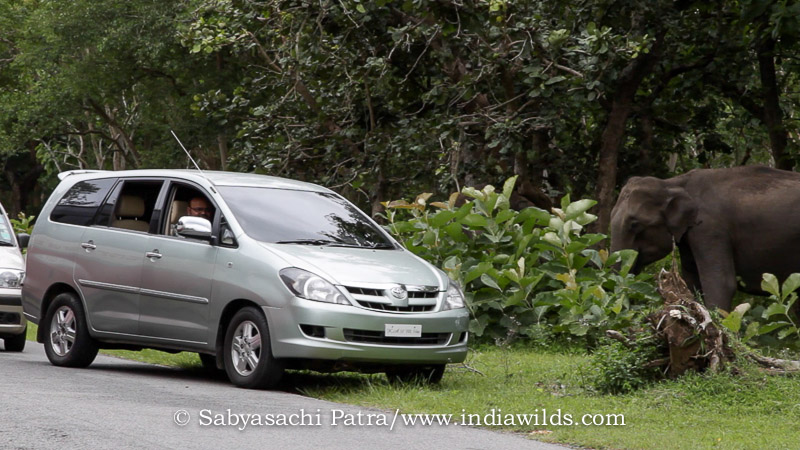

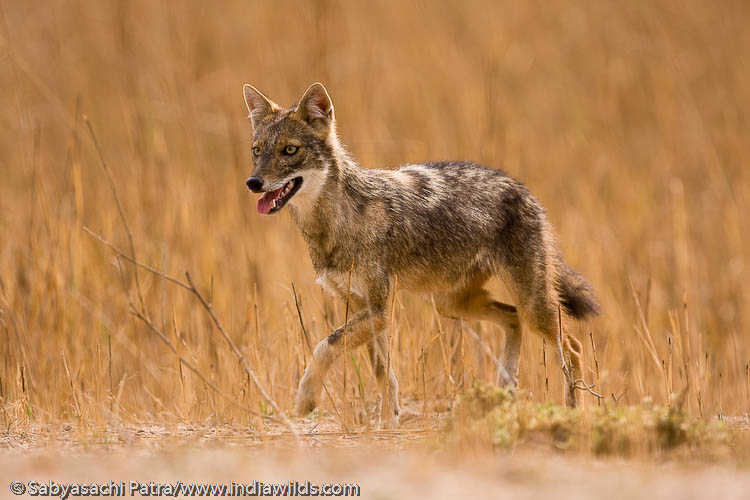

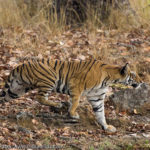









I have no idea that there are elephants in Assam. That’s really great. Hope I can travel up north to see them sometimes. Amazing pics!
Tes,
Northeast is beautiful. You can call it the lungs of India. Among other places visit Kaziranga. You will love the wildlife, people and place.
Cheers,
Sabyasachi
It is the same sad story everywhere, be it wildlife or environment!
Mridula,
It is true that wherever we go we find the same terrible news. We have to strive hard to raise awareness and raise our voice.
Cheers,
Sabyasachi
I thought I will read the downloaded newsletter at leisure. Sadly, its contents are perturbing to the say the least and are unlikely to give any pleasure. While I do not know how this war against the wildlife is going to end, there is surely a ray of hope for the non-humans —their adversaries are likely to blast each other out of the planet due to mutual hate and distrust.
The rate at which we are growing will leave no food for us. So if people don’t die of hunger and climate change related famine, flooding, heat waves etc, then may be they will take down each other in national/religious/sectarian issues. Wonder why our leaders can’t have a sane voice.